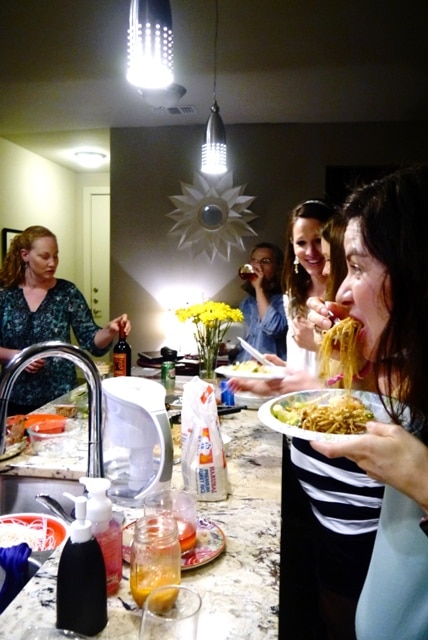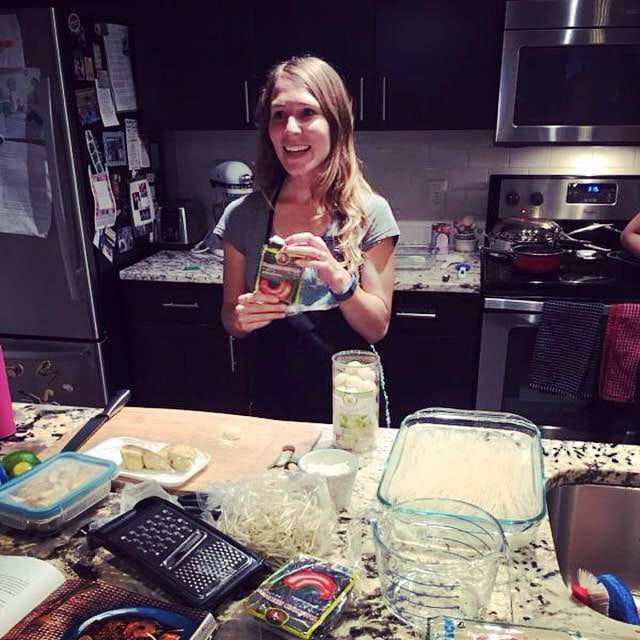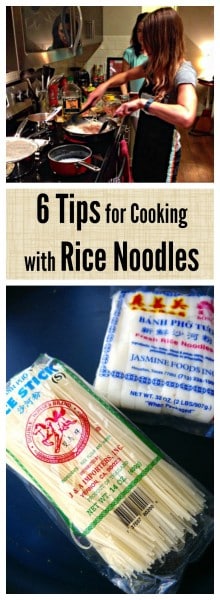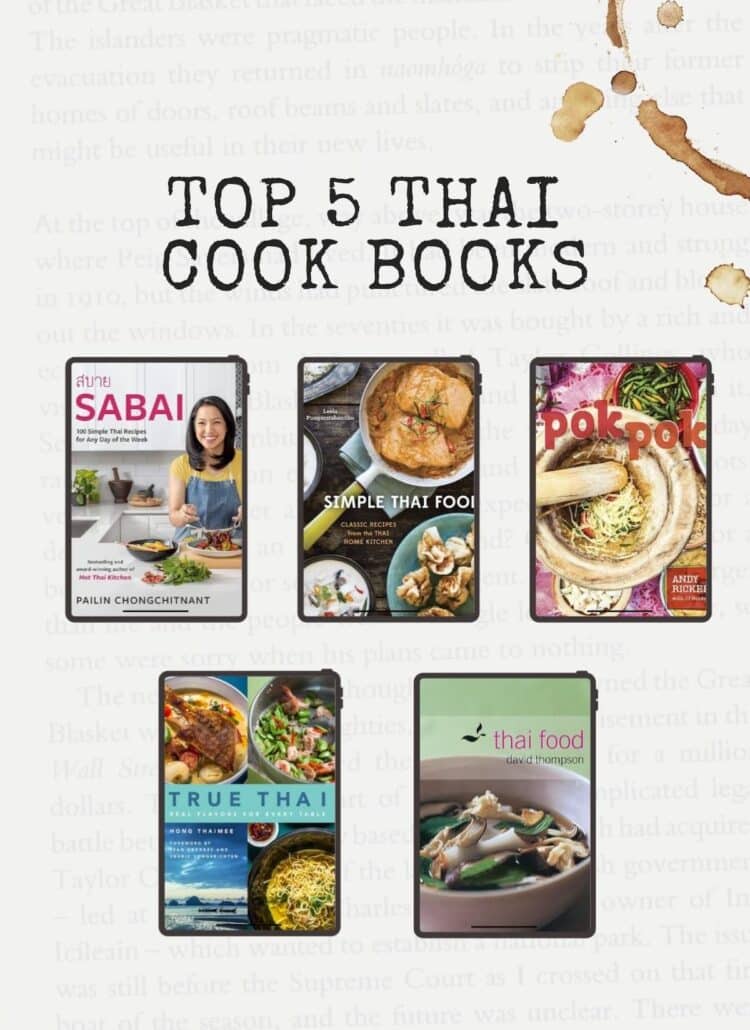I taught another Thai cooking class on Pad Thai this week to my Mothers’ of Preschoolers (MOPS) small group friends. While teaching it I was reminded how for me the hardest part about making Pad Thai is getting the rice noodles just right.
I was even nervous to teach the Pad Thai class since it’s so easy to mess up Pad Thai noodles and didn’t want to serve them underdone Pad Thai rice noodles or gooey Pad Thai.
I decided to just go for it, and was reminded that even though I’m not a Pad Thai Chef, I’ve learned a lot from studying recipes from my favorite Thai chefs, and mainly cooking it and messing it up a lot and learning what not to do, so now I can help others learn from my mistakes.
Here are my six tips on cooking with rice noodles to make Thai dishes like Pad Thai, Pad See Ew, Pad Kee Maw or Thai noodle soups.
Choose the right rice noodles. Most of my American friends tell me they get overwhelmed at the Asian market because they walk down the noodle aisle packed with rice noodles and don’t know which one is best. I always choose rice noodles that say Made in Thailand, and choose your rice noodles based on the Thai dish you’re making.
Fresh Rice Noodles:
I prefer using fresh rice noodles for dishes like Pad See Ew, Pad Thai, Pad Kee Maw, and dried rice noodles for Thai noodle soups. Fresh rice noodles are easy to use because you just put the package uncut in microwave for about a minute or two, and then after it cools a little, cut open the package, and pull apart the strands. It does take some time to pull them all apart and all the noodles have to all be made at once, but for me, I prefer the smooth texture of the fresh noodles compared to dried rice noodles in some Thai dishes.
Dried Rice Noodles
Soak them in room temperature water before using them: If you search how to cook dried rice noodles online, some people say to boil them, others say to soak them in hot water, etc. But from what I’ve learned from reading through advice from Thai chefs, and my own experience, it’s best to soak them before using them in room temperature water until you can wrap a strand around your finger without it breaking. I’ve noticed if you boil them, the noodles release so much starch they get mushy while you are stir-frying them! Ew!
Keep the rice noodles spread apart in the pan while stir-frying to avoid a massive blob of noodles: Another way to avoid your noodles gooping together is to make it your goal to keep the noodles as far away from each other as possible while stir-frying. I find this works best by using two spatulas and pulling the noodles away from each other constantly while cooking, so they don’t mush up. The more your noodles get cozy with each other, the more moisture will come, which leads to gooey noodles.
Use a super high heat. In Thailand, street vendors use gas burners when cooking and use the highest heat possible. This helps evaporate the mushy moisture out of the noodles, and give your noodles that slightly smoky delicious flavor. Of course if the rice noodles are turning black before being cooked, turn the heat down some, but don’t be afraid of using high heat.
Add sauce instead of water to the rice noodles as much as possible. You want your rice noodles to soak up the sauce, so they will be bursting with flavor, instead of tasting like water. But if by adding more sauce to your dish it would be over-seasoned, feel free to add a little water at a time until the noodles are soft and cooked through.
Don’t be afraid of making a Thai noodle dish that doesn’t taste delicious. You might try to make a Thai noodle dish and end up with eww, tasteless noodles, and that’s ok. I’ve done it too, and your next Thai rice noodle dish is just going to taste even better than the one before, and it’s going to keep getting better. You are so brave to try to make a Thai dish you’ve never made before, so keep going and don’t give up even if it’s not the taste you wanted the first, second or third time around!
I love helping others learn the wonders of Thai cooking, so feel free to contact me if you have any questions!
Want to pin these tips on Pinterest to remember them for later? Here is a pretty pin for you!









Great tips. Have you got a similar post about rice? I’ve been messing my InstaPot rice up A LOT lately.
So glad you enjoyed the tips Lori! I will have to try to do a post like this about rice. It’s funny though because in Thailand everyone just uses rice cookers since they eat rice so often and that’s the easiest way 🙂 But I’m sure I can come up with some tips!
Thanks for these tips! It had been a while since I cooked any so I looked online for instructions again & found your page. They turned out way better than my previous attempts!
Thanks for your kind comment Genie! 🙂 Rice noodles can be so tricky, so I’m so glad these tips helped you!
I love cooking chinese and thai food
would love to hear from you to get some tips
Great! Send me any questions you may have!